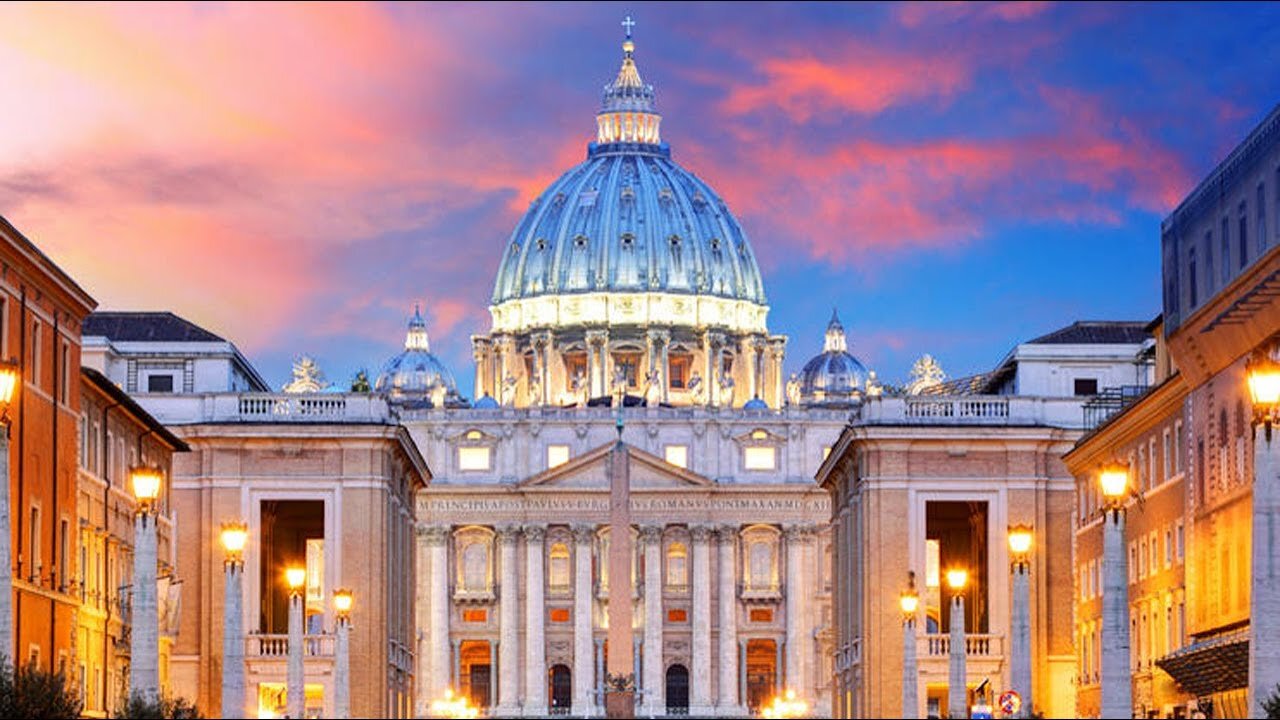Premium Only Content

The Evolution of Design: St. Peter's Basilica through the Ages
St. Peter's Basilica in Vatican City has a rich history that spans centuries, evolving through various architectural phases and under the influence of different architects and popes.
Early History:
In 64 CE, Saint Peter was crucified and buried at Vatican Hill.
Between 326 and 333, the Old St. Peter's Basilica was built on the site of St. Peter's Tomb during Emperor Constantine's reign.
Throughout the Middle Ages, the basilica flourished as a significant pilgrimage site in the Western world.
Renaissance and Modern Era:
In 1505, Pope Julius II ordered the demolition of the old church to make way for a new one.
Construction of the new St. Peter's Basilica began in 1506 under architect Donato Bramante.
Over the years, various architects like Raphael, Antonio da Sangallo, and Michelangelo contributed to the design.
The basilica was officially established in 1626 at the heart of Vatican City.
Architectural Evolution:
Architects like Bramante experimented with unique designs, building from the inside out.
Michelangelo reinforced structural elements and redesigned piers.
The final shape of the basilica was realized by Carlo Maderno and Gian Lorenzo Bernini.
Significance:
St. Peter's Basilica stands as one of the largest buildings globally, showcasing magnificent sculptures and artworks by renowned artists like Bernini and Michelangelo.
The basilica's construction spanned over a century, reflecting a blend of Renaissance and Baroque architectural styles.
This architectural masterpiece not only serves as a religious center but also stands as a testament to the artistic and engineering prowess of its creators across different historical periods.
-
 14:13
14:13
Clickbait Wasteland
13 hours ago $2.22 earnedAsking New Yorkers Who they Support for Mayor: Harlem
17K21 -
 19:55
19:55
The Rad Factory
14 hours ago $0.48 earnedCan I Fix My Fire Damaged F1 Car?
3.71K1 -
 1:26:22
1:26:22
Dialogue works
2 days ago $0.20 earnedScott Ritter: Russia Just DEFIED the U.S.: We'll End the War on OUR Terms!
6656 -
 LIVE
LIVE
BEK TV
22 hours agoTrent Loos in the Morning - 8/01/2025
359 watching -
 13:08
13:08
Dad Saves America
12 hours ago $0.86 earnedTeachers Unions Play Politics While Students Lag Behind - Poisoning of the American Mind: Pt 4
11.4K9 -
 20:05
20:05
Preston Stewart
12 hours ago $1.59 earnedCrimea Raid to Chasiv Yar Fight
10.9K8 -
 8:11
8:11
Millionaire Mentor
15 hours agoTulsi Gabbard and Leavitt DOUBLE-TEAM Kaitlan Collins in FIERY Exchange
8.87K5 -
 46:02
46:02
Coin Stories with Natalie Brunell
1 day agoWhat They’re Hiding About the Economy | Natalie Brunell with Danielle DiMartino Booth
42K7 -
 12:12
12:12
GritsGG
14 hours ago23 Warzone Wins in a Row! (Cypher AR)
84.1K3 -
 2:12:07
2:12:07
Side Scrollers Podcast
21 hours agoCULTURE SHIFT CAUSES MELTDOWNS + MASSIVE CENSORSHIP EFFORTS RAMP UP | SIDE SCROLLERS LIVE
26.8K12